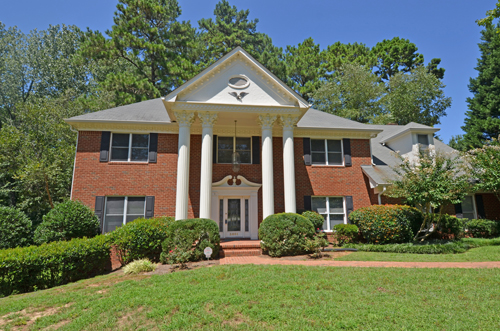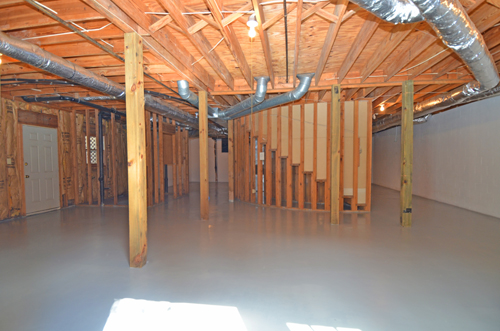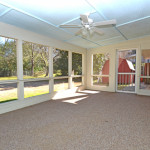
Homebuyer Insider: Avoid the Dirty Dozen
Homebuyer Insider: Avoid the Dirty Dozen
 Homebuyer Insider: Many homeowners know that there is a sabotage group, which we affectionately refer to as “the dirty dozen,” constantly at work to undermine their investment in home and hearth. These fighters go behind the lines to attack the core of a home’s financial value.
Homebuyer Insider: Many homeowners know that there is a sabotage group, which we affectionately refer to as “the dirty dozen,” constantly at work to undermine their investment in home and hearth. These fighters go behind the lines to attack the core of a home’s financial value.
Over the years we have seen these “dirty dozen” defects in many homes in the Atlanta area. In fact, it is almost impossible to find a previously-owned home in Atlanta that has not experienced an invasion of at least one of the “dirty dozen” at some point.
TERMITES: An infestation of termites can cause a great deal of gnashing of teeth and wailing among homeowners. These subterranean insects are everywhere in our Atlanta landscape. And, while they are great aids in the decomposition of fallen trees in a forest, their main diet in a suburban setting can be the very structure of your home.
Homeowners affected by termites should have their home treated – utilizing chemical poisoning or a bait system such as Sentricon – and then keep an annual contract with a termite and pest control company.
When buying a home, purchasers should request a wood infestation report, (a.k.a. termite letter), which will show the presence of any active infestation. This letter is supplied by a Georgia licensed (State Agriculture Department) termite and pest control company.
ELECTRIC PANEL BOARD BOX: Technology for electric service in the home has advanced considerably since the construction of some older homes in the Atlanta area. Circuit breaker panel boards have replaced the older fuse box technology. Both are devices that interrupt the flow of electricity if an excessive level of current surges through the circuit, but circuit breakers on a panel board can simply be reset if they are tripped. Fuses have to be replaced if there is an electrical surge. And, if someone sticks a 30 amp fuse in a 15 amp fuse slot, you have a good chance of starting a fire in the home.
The use of electricity in the home has ramped up dramatically with the use of computers, microwaves, modern appliances and electronics in the home. The technology in your home for handling this electrical load may be outdated. Homebuyers will want to have an inspector knowledgeable about electrical service components determine if an existing fuse box is adequate for the present electrical load. Your inspector should also watch for “double taps” of circuits on the fuse box or panel board. Either could lead to potentially dangerous fire hazards in the home. Homebuyer Insider Tip: This is one of the less costly items to have a professional correct among the dirty dozen list.
FOUNDATION FAILURE: Horizontal cracks in the foundation wall are a sign of potential problems for the home owner as well as the buyer. Most of Atlanta’s older homes have foundation walls constructed of concrete block while granite stone foundation walls can be seen in the oldest Atlanta homes.
These walls are subject to hydrostatic pressure from improperly functioning gutters or drainage around the home. Water pressure pushes in on the walls, causing cracks. Horizontal cracks are evidence of a foundation failure, while vertical cracks are more likely just normal settling of the footing and foundation.
The actual repair of the foundation can be a rather simple internal bracing of the wall with steel framing on the interior of the home. Most waterproofing companies can design an interior framing system that will structurally support the load formerly placed entirely on the block wall or foundation. In addition, they will be able to attack the moisture problem. HOMEBUYER INSIDER TIP: if you are up for tackling a home with this problem, call us as we have a fabulous contractor to recommend.
 LEAKING BASEMENTS: We would venture to guess that almost every basement in Atlanta has leaked somewhere along the way. Our clay soils, combined with heavy rains, create a potent attack on the footings and foundation of your home. The old solution included digging out the walls from the outside, then placing a new French- type drainage system along the footing, and then shoveling soil back in place along the foundation. This was an expensive solution which could destroy landscaping, though it was usually effective.
LEAKING BASEMENTS: We would venture to guess that almost every basement in Atlanta has leaked somewhere along the way. Our clay soils, combined with heavy rains, create a potent attack on the footings and foundation of your home. The old solution included digging out the walls from the outside, then placing a new French- type drainage system along the footing, and then shoveling soil back in place along the foundation. This was an expensive solution which could destroy landscaping, though it was usually effective.The most prevalent solution today is an interior waterproofing system. The concrete along the outer edges of the basement is cut away and a trench is excavated along the perimeter of the basement. A drainage system is installed in the trench – some combination of plastic pipe, granite gravel, and liners – that carries the water out of the house before it can enter the finished portion of the home. Homebuyer Insider Tip: If you have the cash to pay the cost of a leaking basement repair AFTER THE CLOSING, you can usually drive a hard bargain with a seller.
FAKE STUCCO: In the past, thousands of homes in the Atlanta area were constructed of Dryvit and other forms of fake stucco materials. Known in the trade as Exterior Insulation and Finish Systems (EIFS), this is a multi-layered exterior wall cladding comprised of an insulation board, a water resistant base coat, and a hard coat of acrylic co-polymer on the outside.
There is nothing inherently wrong with these construction materials. However, the standard method of construction in use at the time – combined with antiquated building codes – left thousands of homeowners with termite, moisture, and rot problems.
Because the stucco material extended all the way to the soil, termites were able to gain access to the home, tunneling behind the sheets of foam that are part of the construction method. And, as we know from above, termites cause problems for homeowners. For others, moisture entered the home though openings around windows and doors that were improperly flashed, causing rot and a failure in structural integrity in some homes.
A national lawsuit solved most of the problems for homeowners. Companies popped up that mitigated the problems by cutting off the fake stucco before it touched the ground. Additionally, they were able to fix the moisture problems. Alert home inspectors will assist you in making sure the home you are considering has been through this improvement process.
MOLD: Mold is one of the most difficult of the “dirty dozen” to completely eliminate, and some form of mold is present in every older Atlanta home. After all, mold is a naturally occuring organism. Of great concern are the strains of toxic mold that may cause health problems down the road for inhabitants.
While it takes a trained eye to spot some of the toxic mold strains, others look like old food in the refrigerator and are easy to identify. Many flooding victims are seeing these mold blooms in their homes when they return. A good scrub brush and some household bleach can kill many strains of mold. However, problems can occur when mold is behind walls or you are breathing airborne mold particles during removal. So, unless you are tackling a very small, accessible mold growth, this is a process that is probably best left to professionals. HOMEBUYER INSIDER TIP: Costs for mold mitigation range from $1,000 to many thousands of dollars.
CHIMNEYS AND FIREPLACES: Homeowners are generally aware a chimney needs maintenance. Even if it’s nothing more than an annual cleaning of the chimney flue to remove soot and combustible residue that build up from use over time, chimney maintenance is important.
Settling chimneys can pull away from the house, potentially exposing combustible materials through cracks. In addition, firebrick on the interior of the fireplace actually does wear out over time and dampers should function properly. Chimney cleaners are rather affordable ($400 plus), and most include an inspection of the chimney and fireplace for possible fire hazards.
DEFECTIVE POLYBUTYL PIPE / PLUMBING: If a water service line was installed between 1978 and 1995, there’s a high probability that it is constructed using polybutylene piping, instead of the traditional copper water service line. Many Atlanta homes built during this time period had polybutylene blue pipe installed as the service line running from the water meter on the street to house itself. And, some homes have this pipe as the interior plumbing system for the home.
Widely touted as the “pipe of the future” because of the ease of installation, polybutylene pipe has actually failed in most instances and had to be replaced. A national lawsuit brought relief for homeowners who experienced a failure and filed a claim for compensation.
Buyers should ask about the history of the plumbing system and inspectors should be alerted to the potential existence of polybutylene piping. HOMEBUYER TIP: Never take the sellers word for the replacement of this pipe, have your inspector confirm ALL defective pipe has been removed.
ROOFING FAILURES: Most of us are not going to climb up on a ladder and inspect a roof ourselves. Some of the more adventurous among us may take a flashlight up in to an attic, looking for evidence of roof leaks along the decking and rafters. But, few of us are actually qualified to evaluate the roofing and flashing of a home.
The roofing system is the first essential line of defense against moisture entering the home, so it’s important to have someone inspect it. A qualified inspector or a roofing company representative can tell you how to estimate the remaining life expectancy of the roof.
CRACKS IN THE HEAT EXCHANGER OF YOUR FURNACE: Cracks in the heat exchanger of your furnace can allow toxic carbon monoxide to build up in the home. People die every year from carbon monoxide poisoning, in large part because detecting leaks using just the human senses is virtually impossible.
We keep a carbon monoxide sensor and alarm in our home as a contingency, which we purchased for just a few dollars. A qualified technician should examine your heat exchanger, looking for cracks that allow toxic fumes to escape in to the home.
If you see a technician with a handheld dental-type mirror peering into your furnace, you are being protected from a crack that might allow these gases to escape from the furnace.
LEAD-BASED PAINT: Commonly used in homes built before 1978, lead in paint can pose a great danger to your family, particularly children who can ingest paint flakes from walls. According to the EPA’s website, “Lead is a highly toxic metal that was used for many years in products found in and around our homes. Lead may cause a range of health effects, from behavioral problems and learning disabilities, to seizures and death. Children 6 years old and under are most at risk, because their bodies are growing quickly.”
Fortunately, today’s paints do not include a lead component. However, homes built prior to 1978 may have lead-based paint on the walls and ceilings. There is a process for mitigating the presence of lead-based paint, which is particularly important for parents of small children to investigate.
DEFECTIVE SIDING: Some poorly-designed siding, manufactured prior to 1996 and composed of wood particles, wax, and resins glued together was found to fail on a regular basis. A national lawsuit against several major manufacturers, including Georgia-Pacific and Louisiana-Pacific resulted in reimbursements to thousands of homeowners for the removal and replacement of this defective siding product. Unfortunately, not all homeowners used the payout from the settlement to actually replace the defective siding on their home. We do occasionally see this defective siding product on homes in the Atlanta area.
Look for siding that has incurred water damage, is rotting, swelled, or may be buckling away from the wall. Additionally, alert your inspector to check the home for potentially defective siding.
Astute buyers should know the telltale signs of the presence of a “dirty dozen” threat in the home and raise a red flag when tracks are spotted. Some of the “dirty dozen” are easy to eliminate and are really no more than a nuisance. Others are downright obstinate, and may be near impossible to completely eradicate from the home. HOMEBUYER INSIDER TIP: you will find a wealth of information and assistance if you start by alerting your home inspector to these threats.

